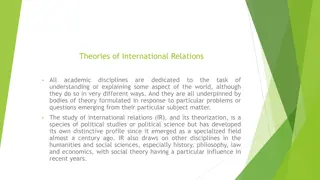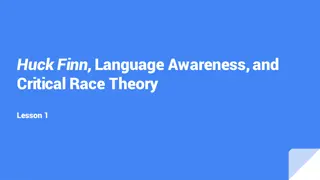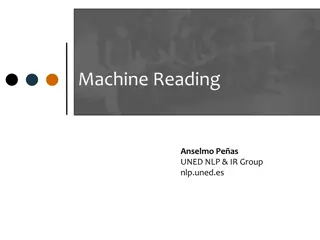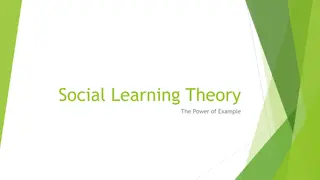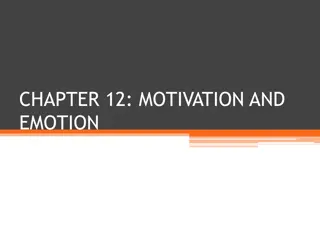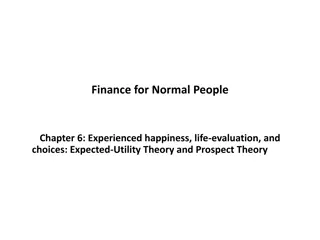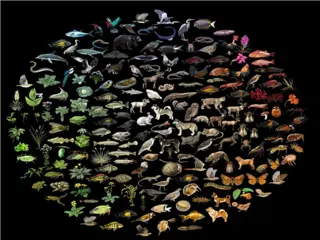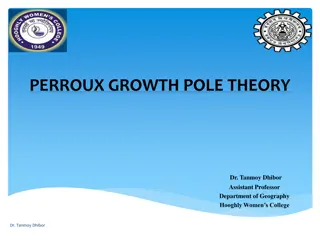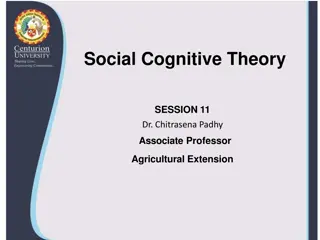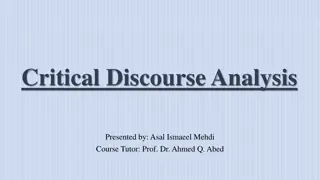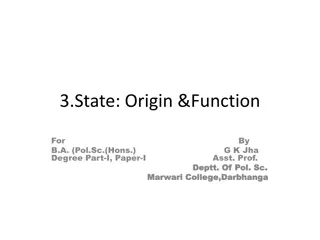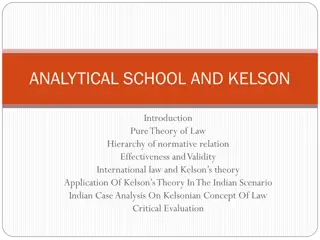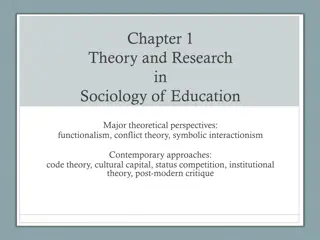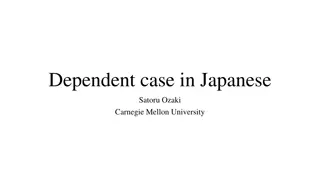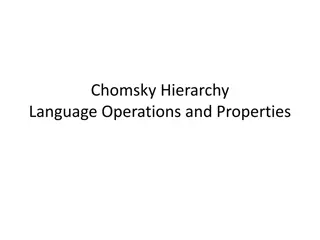Understanding Multicompetence Theory in Language Knowledge
Multicompetence theory, as proposed by Vivian Cook, describes a unique state of language knowledge where bilinguals exhibit enhanced cognitive abilities compared to monolinguals. Evidence shows bilinguals excel in tasks requiring linguistic analysis, divergent thinking, metalinguistic awareness, and communicative sensitivity. Their language systems integrate elements from both languages, affecting phonology, morphosyntax, and lexicon. The theory challenges traditional views by highlighting the distinctiveness and complexity of multicompetence over monolingual competence.
Download Presentation

Please find below an Image/Link to download the presentation.
The content on the website is provided AS IS for your information and personal use only. It may not be sold, licensed, or shared on other websites without obtaining consent from the author. Download presentation by click this link. If you encounter any issues during the download, it is possible that the publisher has removed the file from their server.
E N D
Presentation Transcript
Reconceptualizing Multicompetence as a Theory of Language Knowledge Joan Kelly Hall, An Cheng, and Matthew T. Carlson ETAP 652B Jawan Nesheiwat & Tynisha Anderson
What is Multicompetence? According to Vivian Cook (1991), it is: the compound state of mind with two grammars [whose] competence is a language supersystem that differs in distinct ways from the language knowledge of monolinguals (Hall, Cheng, & Carlson, 2006).
Cooks Evidence 1 Bilinguals: Performed better on tasks that required more analyzed linguistic knowledge (Bialystok 1991, 2001). Scored higher on tests of divergent thinking (Cummins 1979; Diaz 1985). Were considered more metalinguistically aware and flexible in their language learning strategies (Galambos and Goldin-Meadow 1990; Nayak et al. 1989). Proved to be more sensitive/responsive than their listener, when compared to monolinguals (Nicoladis and Genesee 1996).
Cooks Evidence 2 Bilinguals: In addition to containing linguistic structures from L1 & L2, their interlanguage (IL) also contained linguistic structures that were in neither of their L1 nor L2 (Beretta 1989; Corder 1978; Ellis 1985; Selinker and Douglas 1987; Tarone 1983). More research stated that no matter how advanced L2 users are in their L2, their L2 knowledge is different from that of a native speaker (Coppetiers 1987).
Cooks Evidence 3 A study by Flege (1987) showed that L2 phonology factors affected language users L1 phonological systems. From his own study, Cook shows that L2 users grammaticality judgments of their L1 differed from monolinguals. Bilingual L2 systems can influence L1 systems at all stages of bilingualism. Possibly influenced language systems include: Phonology (Leather and James 1996). Morphosyntax (Pavlenko and Jarvis 2002). Lexicon (Laufer 2003)
Assumptions Authors intent: presenting a usage based view of Multicompetence. Three assumptions A view of L1 and L2 language knowledge as distinct systems. The presumption of a qualitative distinction between multicompetence and monocompetence. The assumption of homogeneity of language knowledge across speakers and contexts.
Redressing Assumption 1 Assumption 1: A view of L1 and L2 language knowledge as distinct systems. According to Hall et al., the knowledge of multilingual users is flexible, comprised of dynamic constellations of resources...which are emergent from interaction between internal architectures and cognitive processes...and social experiences (2006). Mental processes Social Experiences Internal construct + Flexible/ever changing group of related things
Redressing Assumption 2 Assumption 2: The presumption of a qualitative distinction between multicompetence and monocompetence. According to Hall et al., all language knowledge is socially contingent and dynamic no matter how many language codes one has access to. The differences across users based not on number of languages, but on amount and diversity of experiences and use (2006). Cook - Mono vs. Multi-competence (#of languages) Hall et al. - Variation of language use + social experience EVEN WITHIN A SINGLE LANGUAGE CODE.
Redressing Assumption 3 Assumption 3: The assumption of homogeneity of language knowledge across speakers and contexts. According to Hall et al. language knowledge is always provisional and sensitive to renegotiation and renewal (2006) therefore there can [n]ever be, a homogeneous monolingual native speaker (2006). Language knowledge is always developing and has no end point, therefore, it cannot be homogeneous across speakers/contexts.
Suggestions for Research Concerned with Multicompetence Old terms: interlanguage, transfer, shift, interference & native speaker New terms: communities of practice, communicative activities, communicative repertoires, reorganization, redirection, expansion, transformation, communicative expertise, and multi-contextual communicative expert.
Suggestions for Research Concerned with Multicompetence Previous research: Native speakers Bilinguals , trilinguals, multilinguals Future research: Ethnographies (of communication and discourse) Manner of acquisition Degree of affective involvement Context of use New research goals: It is not enough to experiment; use more ethnographic methods. Focus on how people use LK in communicative activities and how these activities construct LK.
Conclusion Authors conclude: Cook s research has contributed to more positive view of linguistics. Research on Multicompetence has NOT furthered understandings of LK. Redressed assumptions. Advocate for usage-based approach. New concepts/new terms. New criteria for selecting participants.
Questions: 1. How would you define multicompetence? 2. Do you think the new terminology accurately encompasses the provisional property of language? 3. How does this article influence the way in which we teach?














